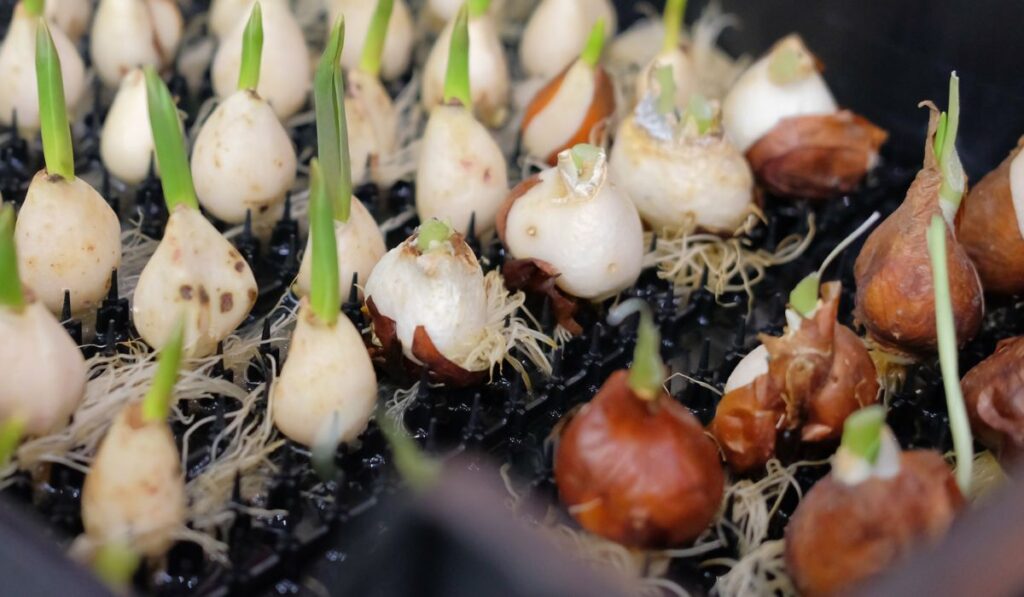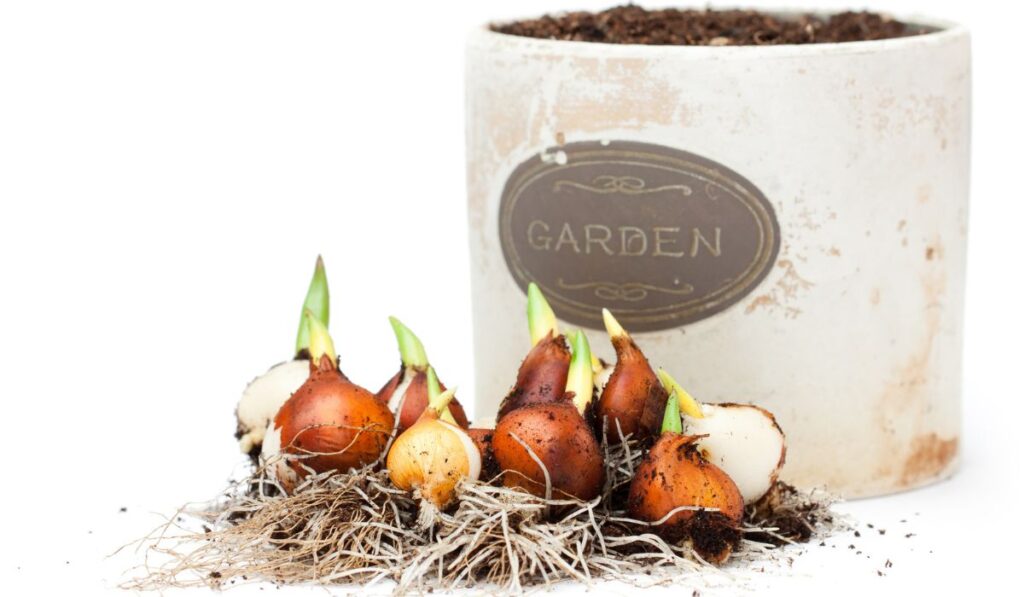Tulips are beautiful flowers that come in a variety of stunning colors that’ll enhance any garden. They’re also relatively easy to grow. So, when should you plant your tulips, and how should you go about it?
Most tulips grow like annuals, so you’ll have to plant them every year in the fall to enjoy their beautiful blossoms in spring. Tulips can grow both in a garden or in a pot, but always make sure to plant them at the right depth, and take the necessary precautions to keep pests away.
Let’s take a closer look at how to plant tulips, what climate they grow best in, and how to protect your plants from pests as they grow.
When Should You Plant Tulips?

If you want your tulip bulbs (on Amazon) to flower in the spring, you’ll have to look at your climate zone and the weather conditions of your area to determine the ideal planting time.
You can plant tulips in autumn if you live in a colder area or early winter if you live in a warmer area. You’ll need to make sure that the soil has cooled down after the summer heat because tulips require cool soil temperature for proper growth.
If you live in an area with hot summer temperatures, it’s best that you plant your tulips in late winter, so that they blossom in spring.
However, if you can’t plant your tulip bulbs at the optimal time, you can also plant them in the early spring season. In such cases, you need to make sure that the soil temperature is cold enough for the hardy tulip bulbs to grow.
It’s not good to plant tulips in the summer because they’re spring flowers and they may wither and die in the summer heat. Also, the soil is warmer in summer, and the plants may not even blossom as a result.
How Deep Do Tulip Bulbs Need to Be Planted?
You should plant your tulips deep enough for them to stay stable in windy conditions but not so deep that they don’t blossom. Read the instructions on the tulip bulb package carefully, because the ideal depth of the plantation varies between the bulb sizes.
Generally, it’s recommended that you plant the tulip bulbs at twice the depth of their height.
If the soil is sandy or loose, you need to plant the bulbs even deeper to ensure proper growth. Planting tulips deeper also protects them from pests.
How to Plant Tulips

When you see the first sight of frost, take it as a sign to start planting your tulip bulbs. You need to ensure that the temperature and atmosphere are ideal for the growth of tulips.
Moreover, you’ll have to plant the tulip bulbs in nutrient-rich and moist but well-drained soil. Don’t forget to water the plant regularly since tulips require a moist environment for optimal growth.
Also, make sure that you don’t overwater your tulips, or the bulbs will rot.
You can plant tulips either in the ground or in pots. Here’s how:
In the Ground
Tulips grow well in flower beds and with other plants, and you can easily plant them directly in the soil. Follow these steps when planting tulip bulbs in the ground:
- Tulip bulbs can irritate your hands, so wear good gardening gloves (on Amazon) before getting to work.
- Plant the tulips in a spot with optimal soil temperature and moisture balance. Make sure that the soil also has proper drainage.
- Make sure that the flower bed is ready and mix it with organic compost. Plant the tulip bulbs about 5 to 8 inches deep with a little gap between them. In a garden, you can also plant them in groups.
- Place the bulbs in the soil with their pointy end facing upwards and cover it with soil thoroughly. If there’s excessive rainfall, don’t water the tulips. However, if the weather is too dry, water the plants once every two days.
In a Pot
Tulips can also grow vibrantly in a pot. Follow these instructions:
- The pot should be at least 8-8.5 inches in diameter with drainage holes, preferably in the bottom. You’ll have to fill the container with multi-purpose compost.
- Wear gloves before planting the bulbs. Make sure that you plant the bulb at a depth that is twice its size or even deeper.
- Plant tulip bulbs so that they’re a few centimeters away from each other or so that they almost touch.
- Avoid cramping the pot with too many bulbs, or some will grow properly and others will die off.
Are Tulips Perennials?
Tulips are perennials, but most grow like annuals. If you’re thinking about snipping off their stems after the flower fades away, the flowers might return, but they’ll be small. There’s also a chance that they may not even bloom again.
Buying new tulip bulbs is better since you’re likely to get high-quality flowers each year. Even if you choose to keep the old plants alive, there’s no guarantee that they’ll continue producing flowers after a year.
How to Keep Away Deer and Pests
One of the biggest challenges you’ll face while growing tulips is protecting them from pests and diseases. Squirrels and chipmunks see this flower as food, and the tulip bulbs are vulnerable to diseases.
If you’re a tulip enthusiast, you need to be vigilant about protecting the tulip bulbs. Here are some tips that will help prevent pests and diseases from ruining your tulip plants:
Keeping Deer Away
Gardeners often find deer annoying because they view your tulips as a tasty snack. If you live in an area with deer, you’ll have to take precautions such as:
- Install a tall and strong fence around your yard. Your fence should be 8 feet tall or higher. A small fence will help you in protecting your tulips from squirrels and chipmunks, but it won’t save your flowers from deer.
- Install lights or noise devices (on Amazon), as these will keep deer away from your plants. Deer get nervous around things like motion detectors with lighting and windmills, so you can place these in your garden to keep them away.
- You can grow daffodils, scented herbs, prickly or furry plants, or even crown imperial herbs around your tulips to keep deer away. These strongly scented plants confuse deer because they aren’t part of their natural diet.
Keeping Pests Away
Other pests, such as chipmunks, will attack tulip flowers or bulbs as soon as they get a chance. They’ll eat the tulip bulbs, flowers, and even the stalks, and you’ll have nothing to show after months of patience.
Here are some ways to protect your tulips from pests:
- Place mulch around the tulips to protect them from small pests.
- Clean the flower bed routinely to protect your tulips from insects like aphids. Planting the tulips in a raised flower bed is another good pest prevention measure.
- To protect your tulip bulbs from the trouble of bulb flies, buy good quality bulbs that are strong and don’t have any holes.
- You can also use commercial pest repellents or pesticides to protect your tulips. However, it’s best not to rely on these chemicals if you have children or pets around. Alternatively, you can use organic homemade repellents.
